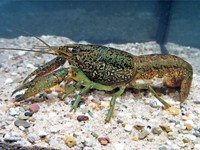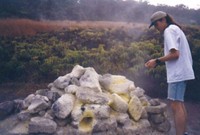Advertisement
Grab your lab coat. Let's get started
Welcome!
Welcome!
Create an account below to get 6 C&EN articles per month, receive newsletters and more - all free.
It seems this is your first time logging in online. Please enter the following information to continue.
As an ACS member you automatically get access to this site. All we need is few more details to create your reading experience.
Not you? Sign in with a different account.
Not you? Sign in with a different account.
ERROR 1
ERROR 1
ERROR 2
ERROR 2
ERROR 2
ERROR 2
ERROR 2
Password and Confirm password must match.
If you have an ACS member number, please enter it here so we can link this account to your membership. (optional)
ERROR 2
ACS values your privacy. By submitting your information, you are gaining access to C&EN and subscribing to our weekly newsletter. We use the information you provide to make your reading experience better, and we will never sell your data to third party members.
Education
Reeking Havoc, Odor Eater, Not in the Stars, Lost and Found
by Rachel Sheremeta Pepling
July 18, 2005
| A version of this story appeared in
Volume 83, Issue 29
Reeking havoc
Last month, Newscripts included an item about Pennsylvania State University researchers developing a horseradish root and hydrogen peroxide mixture as a solution to the offensive odor of hog manure (C&EN, June 13, page 56).
It seems Purdue University researchers are also concerned about pungent pig farms. This time, however, researchers are going straight to the source of the stinking problem, and they mean business. The university recently opened the Swine Environmental Research Building, which holds up to 720 pigs and mimics livestock farm conditions.
Researchers are modifying the pigs' chow to include lower levels of ammonia and hydrogen sulfide, two compounds in swine manure responsible for offending the noses of passersby and neighbors of swine facilities.
Brian Richert, an associate professor of animal sciences at Purdue, told CNN.com that the new feed can change the characteristic of the odor but not necessarily the intensity. "It will probably have the same amount of odor, but it will smell more like a cattle facility than a swine facility. And that would make it more appealing to the neighbors," he says.
Speaking of stinky situations, reader Elizabeth Romano of Boise, Idaho, asked for a reprint of the recipe and chemistry behind a surefire skunk spray stink remover from about 12 years ago.
Originally submitted by Paul Krebaum from Lisle, Ill., the solution consists of the following formula:
- 1 qt 3% hydrogen peroxide (from drugstore)
- D cup baking soda (sodium bicarbonate)
- 1 teaspoon liquid soap
Application should be followed with a tap water rinse, advises Krebaum, who suggested the solution to a friend whose cat had been sprayed.
Skunk spray is composed mainly of low-molecular-weight thiols, explains Krebaum. Alkaline hydrogen peroxide worked well for destroying excess thiols in dilute aqueous solution in Krebaum's lab, so he reasoned it could be used to save sprayed pets from banishment as well.
Poor, poor NASA. Some government agencies just can't catch a break. The space agency finally has a successful mission, and in return, gets sued. By an astrologist.
On July 4, NASA's strategically placed Deep Impact probe actually collided with the Tempel 1 comet (C&EN, July 11, page 12), creating lots of cosmic dust. NASA hopes to gain some insights into planet formation by analyzing the dust. The successful mission was a huge boost for the problem-ridden agency.
According to wire reports, however, Russian astrologist Marina Bai is none too happy about the intentional collision, claiming (prior to the impact) that interfering with the comet would ruin her own insights, affecting her astrology work, not to mention distorting her own horoscope.
Bai apparently felt so deeply impacted by the collision that she is now suing NASA for $300 million.
Sir Isaac Newton's notes on alchemy, thought lost forever, have been found. The notes had been missing since being sold at a Sotheby's auction in 1936 for a whopping 15 British pounds.
Recent cataloging by researchers revealed the physicists' reclusive writings were hiding in the Royal Society's Miscellaneous Manuscripts Collection in London.
Newton carried out extensive research into alchemy even though the making of gold or silver was considered a felony at the time. Most of Newton's notes, discovered after his death in 1727, are about the works of the French alchemist Pierre Jean Fabre. They were written in English but also contained codes in order to keep Newton's own methodologies and theories of alchemy secret.
The Royal Society placed Newton's collection of notes on public display as part of its Summer Science Exhibition, which ran July 47.
This week's column was written by






Join the conversation
Contact the reporter
Submit a Letter to the Editor for publication
Engage with us on Twitter